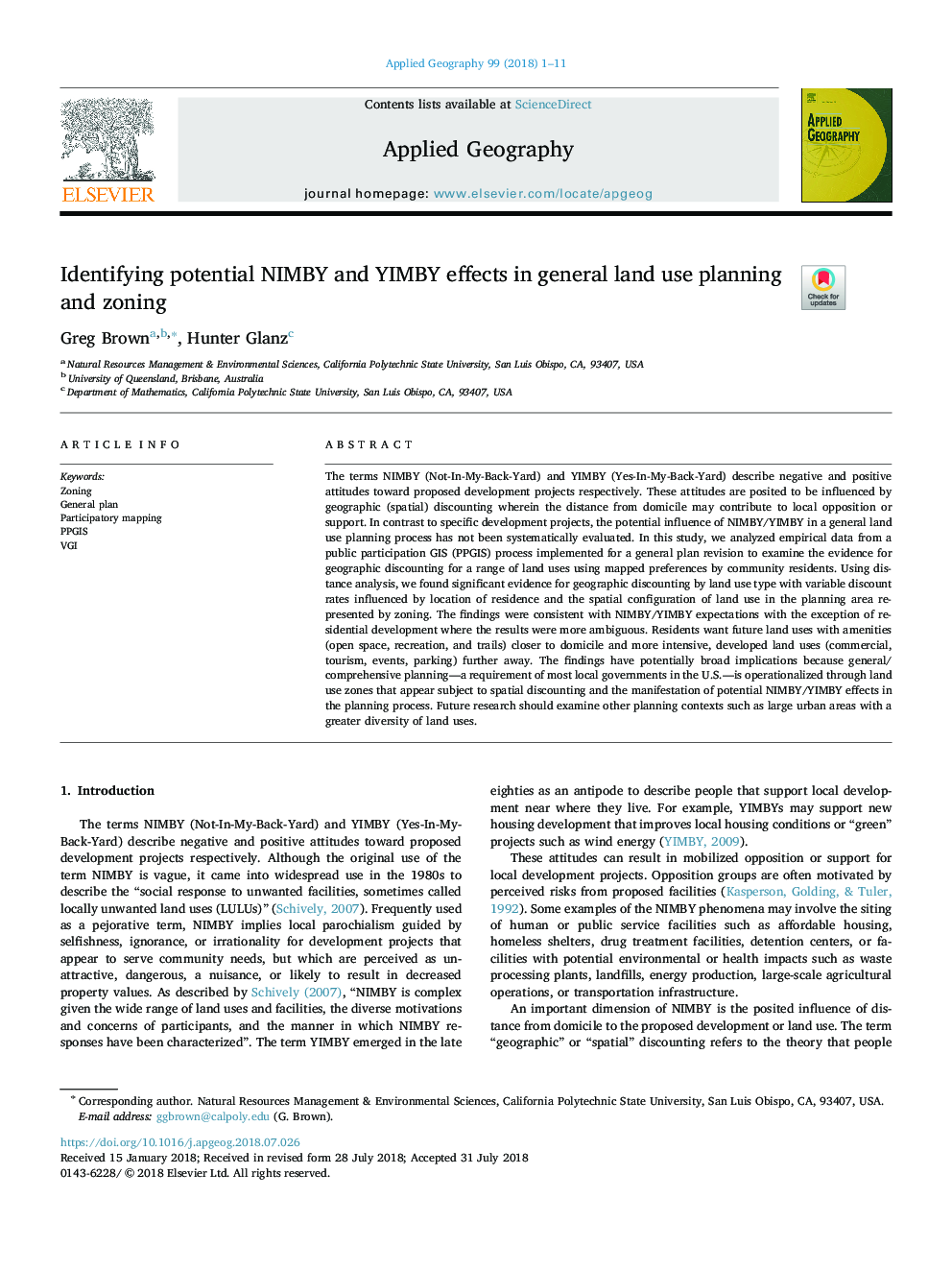| Article ID | Journal | Published Year | Pages | File Type |
|---|---|---|---|---|
| 6538194 | Applied Geography | 2018 | 11 Pages |
Abstract
The terms NIMBY (Not-In-My-Back-Yard) and YIMBY (Yes-In-My-Back-Yard) describe negative and positive attitudes toward proposed development projects respectively. These attitudes are posited to be influenced by geographic (spatial) discounting wherein the distance from domicile may contribute to local opposition or support. In contrast to specific development projects, the potential influence of NIMBY/YIMBY in a general land use planning process has not been systematically evaluated. In this study, we analyzed empirical data from a public participation GIS (PPGIS) process implemented for a general plan revision to examine the evidence for geographic discounting for a range of land uses using mapped preferences by community residents. Using distance analysis, we found significant evidence for geographic discounting by land use type with variable discount rates influenced by location of residence and the spatial configuration of land use in the planning area represented by zoning. The findings were consistent with NIMBY/YIMBY expectations with the exception of residential development where the results were more ambiguous. Residents want future land uses with amenities (open space, recreation, and trails) closer to domicile and more intensive, developed land uses (commercial, tourism, events, parking) further away. The findings have potentially broad implications because general/comprehensive planning-a requirement of most local governments in the U.S.-is operationalized through land use zones that appear subject to spatial discounting and the manifestation of potential NIMBY/YIMBY effects in the planning process. Future research should examine other planning contexts such as large urban areas with a greater diversity of land uses.
Keywords
Related Topics
Life Sciences
Agricultural and Biological Sciences
Forestry
Authors
Greg Brown, Hunter Glanz,
